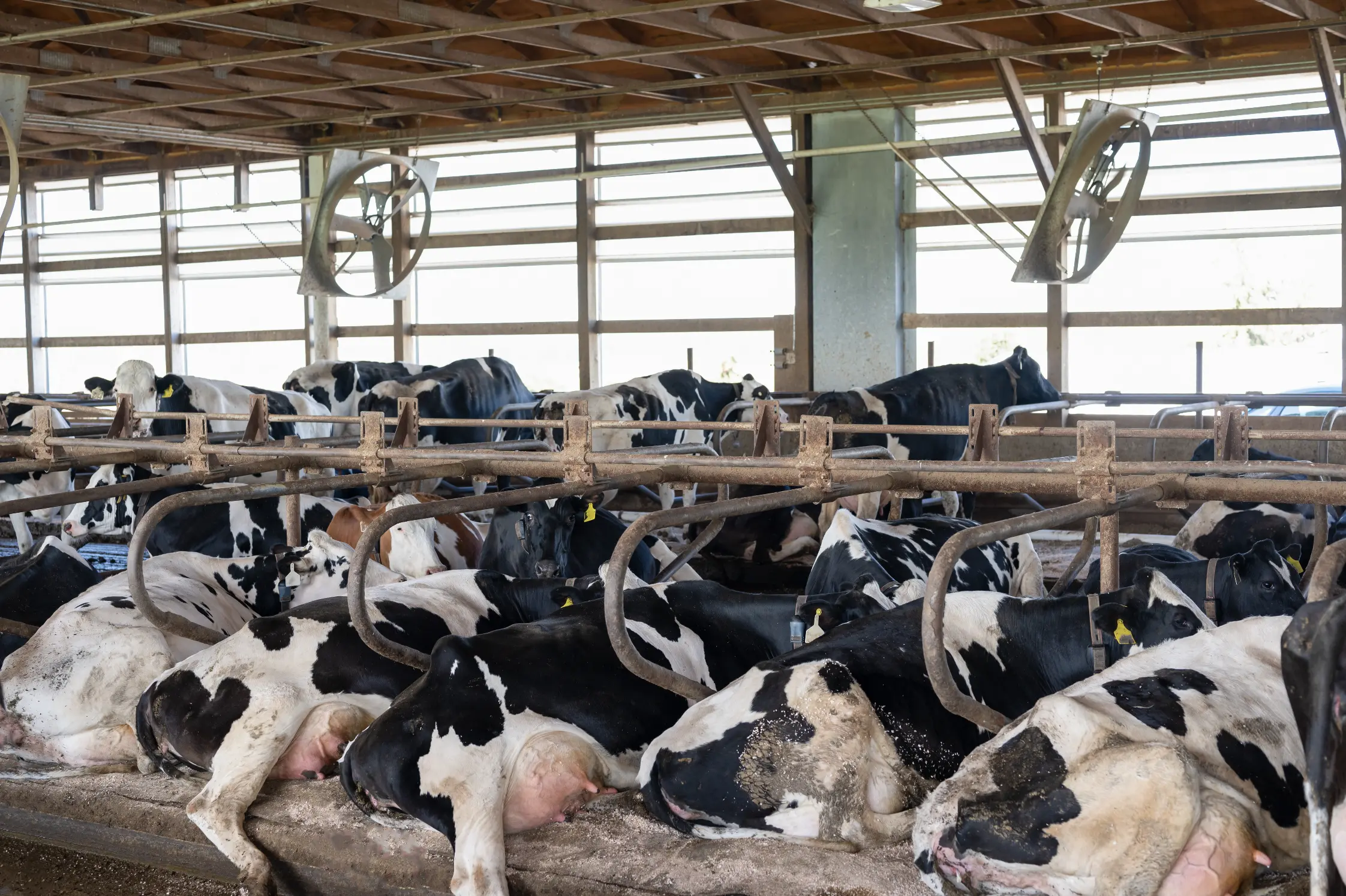
Sometimes, less is better.
New technologies provide options to intervene to help cows get bred back in a timely manner. But with growing public push-back from consumers and activists concerned with the use of hormones to “manipulate” cows, perhaps we should also look for opportunities to let the cows be cows.
Activity monitors provide a wealth of information to producers who have adopted them. And new research from the University of Guelph shows that when you combine information from on-farm postpartum health records with activity monitors used to detect estrus, you can predict which cows will most likely breed back and which cows will need a targeted reproductive intervention.
A total of 1,743 Holstein cows (588 primiparous and 1,155 multiparous) on two southwestern Ontario dairies were enrolled in the study. Both herds used activity monitors to determine estrus for first AI after each herd’s established voluntary waiting period (50 and 55 days in milk).
On-farm recorded health variables considered in the study included parity, difficulty calving, stillbirth, twin birth, prepartum body condition score (BCS), change in BCS, milk fever, retained placenta, metritis, endometritis, purulent vaginal discharge, displaced abomasum, mastitis, lameness, interval to onset of cyclicity, and milk yield.
For comparison, researchers also did laboratory analysis to determine total calcium (Ca), haptoglobin (Hp), and non-esterified fatty acids (NEFA) at 2 and 6 ± 2 days in milk (DIM). Blood β-hydroxybutyrate (BHB) and metritis were assessed at 4, 8 ,11 and 15 days ± 2 DIM.

Results from factors that can be assessed on farm include:
- Estrus was successfully detected by activity monitors in 77% of primiparous and 66% of multiparous cows between the VWP and 75 DIM.
- In cows that experienced 0, 1 or >1 of the health risk factors studied, the probability of detecting estrus with activity monitors was 81 %, 68% and 56% respectively.
- Estrus detection by activity monitor was less likely in cows that experienced retained placenta, metritis, endometritis or purulent vaginal discharge. These cows also had a longer time to first AI, reduced risk of pregnancy at first AI and longer time to pregnancy.
- Considering only variables diagnosed at the farm, cows that experienced difficulty calving, hyperketonemia (HYK, defined as BHB≥1.2 mM at 8±2 DIM), metritis, purulent vaginal discharge, lameness, low milk yield or ≥ 0.50-point BCS loss all had reduced pregnancy rates.
The authors concluded that cows can be identified as more or less likely to be detected in estrus by activity monitors. Cows that experience certain health events and/or production parameters may be best served by hormone-based programs to assist them in returning to pregnancy. Others can be bred off of activity monitor data alone, with no other intervention required.
Postpartum health data recorded on farm provides valuable information. You can use that data to help make targeted reproductive interventions for certain cows instead of blanket hormone treatment for all cows. If you would like to learn more about this topic, talk to your TDA veterinarian about how to use the data from activity monitors and on-farm health records to help manage your cows.
To learn more about the research go to: https://doi.org/10.3168/jds.2023-23268






